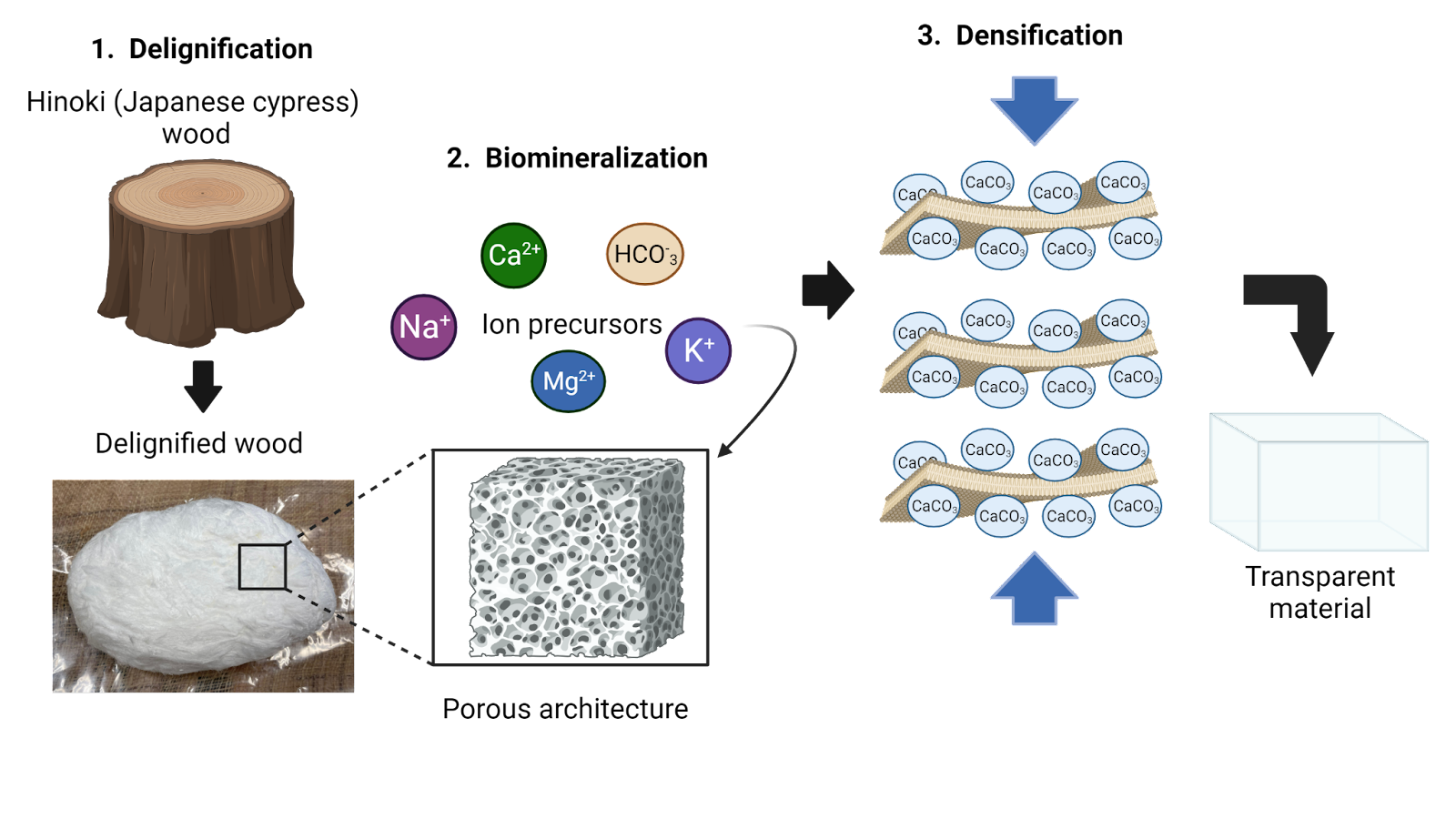Never miss an update from Larisa Sheloukhova
Create your free account to connect with Larisa Sheloukhova and thousands of other innovative organizations and professionals worldwide
Bio-inspired materials are gaining more and more interest, especially as alternatives to plastic. Biominerals such as seashells and pearls are materials generated by living organisms and composed of both organic and inorganic matter which gives them high toughness. However, such materials are usually not transparent, a highly desired property when it comes to the materials we use for various purposes. In general, it is difficult to achieve both high strength and optical transparency in a single composite material. Usually silica-based transparent glass is used as one of the most dominant engineering materials. However, even advanced oxide glasses are highly brittle and fail to resist the fracture. Wood, on the other hand, is crack-resistant and lightweight, but is not transparent. Attempts to develop transparent wood have been made, but failed to meet the requirements set forth by engineering applications. Therefore, professor Kamitakahara’s team developed a new method of producing a wood-based biomineral-inspired material that has high specific strength and toughness as well as transparency.
Technical Summary
First, the researchers took Hinoki (Japanese cypress) wood, a material widely used in construction of Japanese shrines and temples, and chemically removed lignin and hemicellulose from it in a process known as delignification (Fig.1). This resulted in white-colored porous material composed of tube-like channels, which is the inherent micro-structure of wood (Fig.1). Then the researchers functionalized the delignified wood by introducing carboxylate (COOH) and phosphate (PO4) functional groups. This procedure, known as functionalization, improves the deposition of calcium carbonate (CaCO3) in wood micro-channels, which is the next step in the production, i.e. biomineralization (Fig.1).

Figure 1. Schematic summarizing the production process of transparent food.
For this step, the functionalized wood is immersed into a biomineralization solution to introduce various ion precursors. The delignified and functionalized wood has abundant hydroxyl/carboxylate/phosphate functional groups which promote the formation and growth of crystal forms of calcium carbonate (CaCO3), known asaragonite crystals, along the direction of channels during biomineralization process (Fig.1).The biomineralization followed by freeze-drying leads to self-assembly of aragonite layers along the wood channels with formation of micro-architecture similar to the one observed in seashells and pearls. Importantly, in comparison to natural biomineralization which takes months or years, only 14 days was sufficient for biomineralizing the wood.
Finally, the researchers placed the biomineralized wood in between two steel plates of a hot press at 60ºC and kept it under pressure for 24 hours. The densification process resulted in formation of unique micro-architecture and induction of new intermolecular interactions between the inorganic crystals and organic layers. The wood cell walls collapsed upon densification with entrapment of calcium carbonate crystals in their inter-layers with reduction in material thickness by 90%. The obtained material exhibits high transparency, strength, and toughness.
Technology Readiness Level
3
Potential Applications
Building materials
Interior materials
Photonic and electronic devices
Possible Collaboration Mode(s)
R&D collaboration
Licensing
MTA
Patent No
WO2023/027074
Inventor(s)
Hiroshi Kamitakahara, Ph.D.
Prodyut Dhar, Ph.D.
Kyoto University was founded in 1897, the second university to be established in Japan. Kyoto University is among 10 National Designated Universities in Japan. It boasts 18 graduate schools, 10 faculties, 12 research institutes, and 26 centers and other establishments. Research conducted at Kyoto University spans the full spectrum of fields from social to natural science.
The outstanding research conducted at Kyoto University gives birth to useful technologies that could greatly benefit society. IAC (Office of Institutional Advancement and Communications) was established at Kyoto University to bridge the gap between researchers and industry. We facilitate joint research, technology transfer, creation of university startups, and provide entrepreneurial education. We are building a strong network of global industry partners to make sure basic research reaches the market.
Create your free account to connect with Larisa Sheloukhova and thousands of other innovative organizations and professionals worldwide
Send a request for information
to Larisa
Technology Offers on Innoget are directly posted
and managed by its members as well as evaluation of requests for information. Innoget is the trusted open innovation and science network aimed at directly connect industry needs with professionals online.
Need help requesting additional information or have questions regarding this Technology Offer?
Contact Innoget support